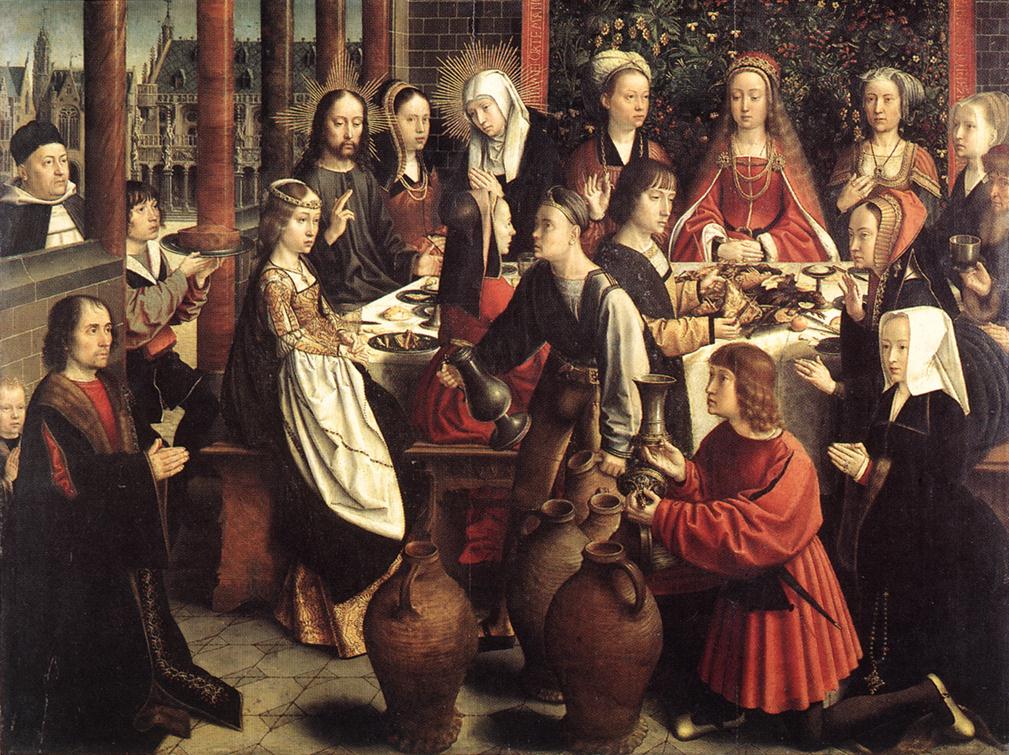Today’s Gospel concludes with a phrase that deserves our attention. It is the commentary that the evangelist makes about the miracle he has just narrated:
This that Jesus did in Cana of Galilee was the first of his miraculous signs. Thus he showed his glory and his disciples believed in him.
 It could also be translated that Jesus established this principle of his miraculous signs in Cana of Galilee; it was not only the first, but from it all the others arose. In the Gospel according to John, who alone narrates this miracle, the transformation of the water into wine is of such great importance that it aroused the faith of his disciples, almost as a foretaste of the resurrection. Thus he showed his glory, and his disciples believed in him.
It could also be translated that Jesus established this principle of his miraculous signs in Cana of Galilee; it was not only the first, but from it all the others arose. In the Gospel according to John, who alone narrates this miracle, the transformation of the water into wine is of such great importance that it aroused the faith of his disciples, almost as a foretaste of the resurrection. Thus he showed his glory, and his disciples believed in him.
This miracle, together with the visit of the Magi to the Child God in Bethlehem and the baptism of Jesus, are the three events that the Christian Churches of the East celebrate together, for in them Jesus was made known as God made man and Savior of humanity. It is necessary, therefore, to find in the narration of this miracle the clues that allow us to understand its meaning and transcendence for the disciples of Jesus and for the evangelist who recounts it.
St. John the Evangelist always insinuates throughout his Gospel that Jesus’ words and actions have a deeper meaning than what is apparent. In this account, Jesus’ response to his mother is striking. When Mary, who was invited with her Son to the wedding, points out to him that they no longer have wine, Jesus responds:
Woman, what can you and I do? My time has not yet come.
 The “hour” of Jesus is that of his death on the cross, his surrender for humanity and his supreme offering to God. of Jesus is that of his death on the cross, his surrender for humanity and his supreme offering to God. This gospel is just beginning, but why does Mary’s comment about the lack of wine lead Jesus to think that she is asking him to die on the cross? If we stay on the literal plane, Jesus’ response seems disproportionate. However, if Mary’s remark has a deeper meaning, we must ask what Jesus understood in her words to protest that his hour had not come.
The “hour” of Jesus is that of his death on the cross, his surrender for humanity and his supreme offering to God. of Jesus is that of his death on the cross, his surrender for humanity and his supreme offering to God. This gospel is just beginning, but why does Mary’s comment about the lack of wine lead Jesus to think that she is asking him to die on the cross? If we stay on the literal plane, Jesus’ response seems disproportionate. However, if Mary’s remark has a deeper meaning, we must ask what Jesus understood in her words to protest that his hour had not come.
Another important observation is that, in this story, the bride never appears. The protagonists are Jesus, his mother, the disciples who accompany him and the servants who obey his order to fill six jars of water destined for the Jewish purifications. The exact moment when the water becomes wine is not narrated. It is only mentioned that, when the water is brought to the keeper of the feast, he admires the quality of the wine and praises the bridegroom, who has had nothing to do with the event.
The evangelist seems to suggest that the true bridegroom is Jesus, who has come to celebrate his wedding with the Church. Jesus’ protest that his hour has not yet come makes sense if we understand this miracle as a foretaste of his self-giving for humanity, symbolized in the wine, the image of his blood shed for the forgiveness of sins.
The prophet Isaiah proclaims:
As a young man is betrothed to a maiden, so shall your maker be betrothed to you; as a bridegroom rejoices over a bride, so shall your God rejoice over you.

This nuptial language describes salvation as an act of God’s profound love for humanity. The New Testament continues this tradition: Jesus is the bridegroom who betroths himself to his Church, and the kingdom of heaven is compared to a wedding feast.
The new wine that Jesus offers symbolizes his sacrifice on the cross, while the water of the Jewish purifications, destined to the ancient regime, gives its place to the wine of salvation. Thus Jesus manifested his glory, for the glory of God is the salvation of humanity.
We participate in this wedding and in this glory if we place our faith in Jesus. As the acclamation before the gospel says:
God has called us through the gospel to share in the glory of our Lord Jesus Christ.
Let us allow ourselves to be filled with the glory of God and let us participate from now on in the wedding of the Lamb, remembering that, at the end of the feasts of Christmas, we celebrate that God has united himself to our humanity in the incarnation of his Son.


